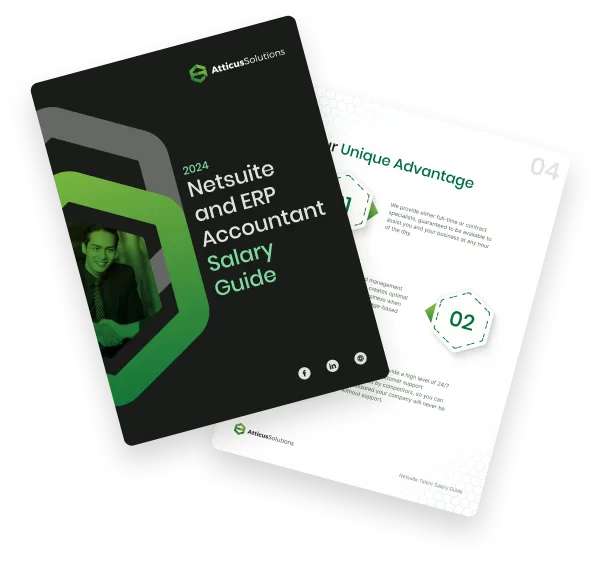Best Onboarding and Offboarding Practices for Smooth Transitions

When it comes to hiring new employees or letting go of existing ones, onboarding and offboarding are two crucial processes that can make or break your company's success.
Onboarding is the process of integrating new hires into your company culture, while offboarding is the process of transitioning employees out of your organization.
Both of these processes have a significant impact on employee morale, productivity, and overall success.
Following best practices is essential to ensure your onboarding and offboarding processes are effective.
By implementing best practices for onboarding and offboarding, you can help your employees feel valued, supported, and engaged throughout their time with your organization.
This can lead to increased retention rates, improved productivity, and a stronger company culture overall.
In the following sections, we'll explore some of the best practices for onboarding and offboarding to help you create a successful process for your organization.
Onboarding Essentials
Effective onboarding is a critical component of the employee lifecycle. It can help increase engagement, productivity, and knowledge transfer while also promoting a positive work environment and employer brand.
Following these essential onboarding practices can help ensure a smooth and successful transition for new employees.
1. Onboarding Process
The onboarding process is the first step in creating a positive impression for new employees.
It involves a series of administrative tasks, documentation, and communication that must be completed before the new employee starts work.
A comprehensive onboarding checklist ensures that all necessary tasks are completed on time and that the new employee feels welcomed and supported from the beginning.
2. Training and Integration
Training and integration involve providing new employees with the knowledge and skills they need to be productive in their new role and helping them integrate into the company culture.
This can include providing an overview of the company's history, mission, and values and introducing them to key team members and stakeholders.
3. Technology and Equipment Setup
Setting up technology and equipment for new employees is an integral part of the onboarding process.
This includes providing access to necessary software, tools, and equipment and ensuring that everything is set up and working correctly.
Giving clear instructions and support can help new employees feel confident and productive from day one.
4. Compliance and Paperwork
Compliance and paperwork are essential components of the onboarding process, including completing necessary paperwork such as tax forms and employment agreements and ensuring that new employees understand company policies and procedures.
Clear guidance and support can help new employees feel confident and secure in their new roles.
Offboarding Best Practices
When an employee decides to leave your company, ensure that the offboarding process is as smooth as possible.
Offboarding is the process of managing the transition of departing employees out of the organization.
It is an essential part of the employee lifecycle, and if done successfully, it can help boost morale and maintain a positive relationship with the departing employee.
Here are some best practices to consider when offboarding an employee.
1. Exit Interview and Feedback
One of the most critical steps in the offboarding process is conducting an exit interview. This interview provides an opportunity for the departing employee to give feedback on their experience with your company.
It is essential to ask open-ended questions and listen to their responses carefully. You can use the feedback to improve your company's practices and procedures, which can help boost employee satisfaction and retention.
2. Offboarding Checklist and Procedures
Having a checklist and procedures in place can help ensure the offboarding process is streamlined and efficient.
The checklist should include steps such as collecting company property, revoking access rights, and completing paperwork.
Having a transparent process in place can help reduce stress for both the departing and remaining employees.
3. Handling Company Assets and Security
Ensuring that all company assets are returned before the employee leaves is crucial. This includes equipment, keys, access cards, and any other company property.
Additionally, it is essential to revoke access rights to company systems and data to prevent security risks.
Having clear guidelines and procedures can help ensure all assets are returned, and access rights are revoked.
4. Legal and Financial Considerations
When offboarding an employee, legal and financial considerations must be considered. These include final paychecks, COBRA, and non-compete agreements.
It is essential to ensure that all legal and financial requirements are met to prevent any legal issues.
Fostering a Positive Transition
Offboarding is a critical aspect of the employee lifecycle that requires as much attention as onboarding.
Following these best practices can help ensure a positive offboarding experience for departing employees.
This will help maintain a positive relationship with the employee and boost morale among the remaining staff, contributing to a positive work environment and employer brand.
1. Maintaining a Positive Relationship
Maintaining a positive relationship with departing employees is essential for a smooth transition. It shows that you value their contributions and respect their decision to leave.
You can achieve this by conducting exit interviews to gather feedback and suggestions for improvement.
It is also crucial to provide the departing employee with a clear understanding of the offboarding process, including what to expect and how to prepare.
2. Knowledge Transfer and Succession
Knowledge transfer and succession planning are critical components of successful offboarding.
You can ensure a smooth transition by identifying a successor and providing them with the necessary training and resources.
This will help transfer the departing employee's knowledge and expertise to the successor, minimizing the impact on the business.
3. Communication and Continuous Improvement
Effective communication is vital to a successful offboarding process. You should communicate regularly with the departing employee, keeping them informed of the process and any changes.
It is also essential to communicate with the remaining staff, reassuring them that the business is stable and their jobs are secure.
Continuous improvement is also crucial for a successful offboarding process.
You should regularly review and update your offboarding procedures to make sure they remain effective and efficient. This will help ensure the process runs smoothly and that departing employees leave a positive impression of the company.
Conclusion
Effective onboarding and offboarding practices are essential for ensuring a positive employee experience and maintaining a healthy workplace culture.
Following best practices such as preboarding new hires, providing clear expectations and goals, and conducting exit interviews can improve employee retention and reduce turnover costs.
Additionally, it is essential to remember that onboarding and offboarding are ongoing processes that require continuous evaluation and improvement.
Regularly seeking employee feedback and analyzing metrics such as time-to-productivity and turnover rates can help you identify areas for improvement and adjust your practices accordingly.
Remember, the success of your onboarding and offboarding practices depends on your commitment to creating a positive employee experience.
By prioritizing your employees' needs and goals, you can build a strong, engaged, and productive workforce.
To further help you with your onboarding and offboarding practices, download Atticus Solutions' Salary Guide.
This guide provides valuable insights into industry trends and compensation benchmarks, allowing you to stay competitive and attract top talent.
Frequently Asked Questions

Compare NetSuite ERP talent salaries
Attracting top NetSuite talent with clear job descriptions is the first step. Understanding salaries is your next key move! Download this free salary guide to view talent costs, offshore hiring tips, and more
Learn how to scale your business

What is Your Strategy for Finding Rare Skill Sets like NetSuite Accountants?
Join our talented team. We are a small, passionate team with a commitment to hiring the best.




